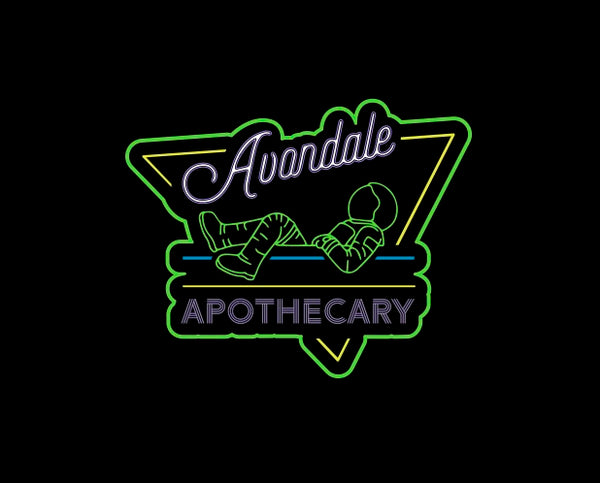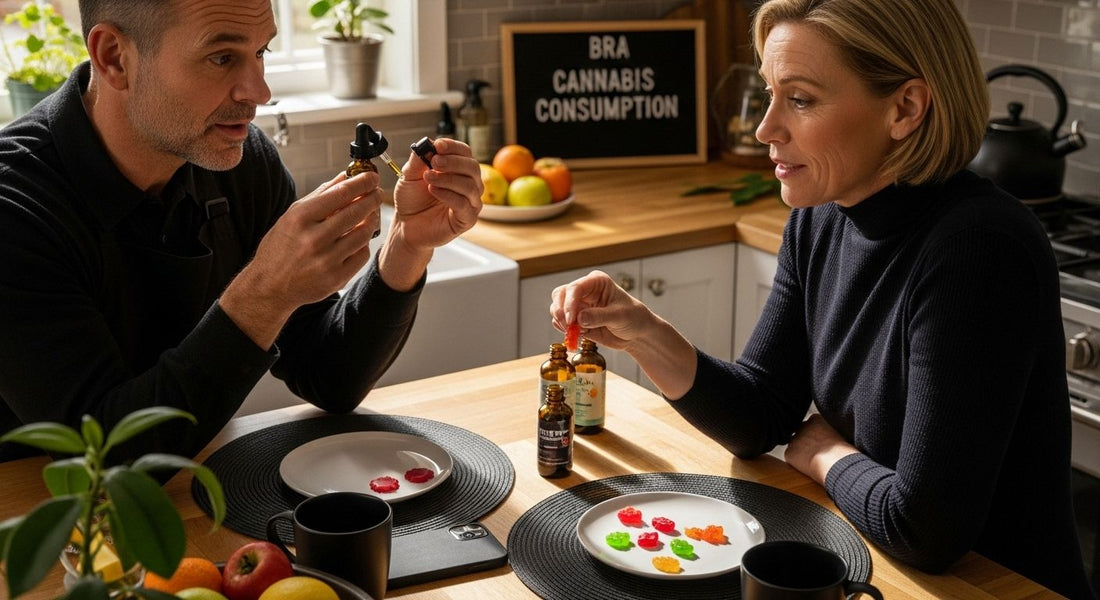
Cannabis is showing up far beyond rolling papers these days. Now, tinctures and edibles account for over half of new product sales in some states, pulling in consumers who want options besides smoking. Strangely, even with this surge in popularity, most people have no clue how wildly different these two options can feel in your body.
Table of Contents
- What Are Tinctures And Edibles?
- The Importance Of Consumption Methods In Cannabis
- How Tinctures And Edibles Affect The Body
- Comparing The Benefits And Drawbacks
- Real-World Uses And Preferences
Quick Summary
| Takeaway | Explanation |
|---|---|
| Tinctures provide rapid onset of effects | Tinctures allow effects to be felt within 15-45 minutes due to sublingual absorption into the bloodstream. |
| Dosage control is better with tinctures | Users can measure precise amounts easily, allowing for consistent and adjustable consumption. |
| Edibles offer longer-lasting effects | Metabolized through the liver, edibles provide prolonged experiences, suitable for extended symptom management. |
| Understand your preferred method for effects | Different consumption methods cater to individual preferences and health needs, impacting both onset and duration of effects. |
| Consider therapeutic and lifestyle goals | Medical users favor tinctures for targeted relief, while recreational users might prefer edibles for immersive experiences. |
What Are Tinctures and Edibles?
Cannabis consumption methods have evolved significantly, with tinctures and edibles emerging as popular alternatives to traditional smoking. These consumption techniques offer unique experiences and benefits for both medical and recreational cannabis users.
Understanding Cannabis Tinctures
Cannabis tinctures are concentrated liquid extracts derived from cannabis plants, typically prepared using high-proof alcohol as a solvent. These potent extracts allow users to consume cannabinoids in a precise, controlled manner. Tinctures are usually administered sublingually (under the tongue), where they are rapidly absorbed into the bloodstream through mucous membranes.
Key characteristics of cannabis tinctures include:
- Rapid onset of effects (15-45 minutes)
- Precise dosage control
- Discreet consumption method
- Long shelf life
- Versatile usage options
Exploring Cannabis Edibles
Edibles represent another sophisticated cannabis consumption method involving food and beverage products infused with cannabinoids. These products transform cannabis into consumable forms like gummies, chocolates, baked goods, and beverages. Unlike tinctures, edibles are processed through the digestive system, resulting in a slower but potentially more prolonged effect.
According to Colorado State University’s Cannabis Research Center, edibles offer a diverse range of consumption options that appeal to individuals seeking alternatives to smoking. The metabolization process through the liver converts THC into a more potent compound, which can create a more intense and longer-lasting experience compared to other consumption methods.
While both tinctures and edibles provide unique cannabis experiences, they differ significantly in absorption, onset time, and overall effect. Understanding these differences helps consumers make informed choices about their preferred consumption method.
Below is a comparison table summarizing the main differences between cannabis tinctures and edibles, helping you quickly see how they contrast in key areas.
| Feature | Tinctures | Edibles |
|---|---|---|
| Onset Time | 15-45 minutes (rapid due to sublingual absorption) | 30-60 minutes (slower, requires digestion) |
| Duration of Effects | Moderate (shorter than edibles) | Long-lasting (can last several hours) |
| Dosage Control | High precision (measured with droppers) | Less precise (predetermined per item, variable) |
| Discreetness | Highly discreet, no odor | Discreet, but may be noticeable as food |
| Shelf Life | Long shelf life | Depends on food item, can expire faster |
| Therapeutic Suitability | Superior for rapid and adjustable relief | Better for extended, sustained symptom relief |
| Common Users | Medical users needing fast, precise dosing | Recreational users preferring immersive effects |
The Importance of Consumption Methods in Cannabis
Cannabis consumption methods are far more than simple delivery mechanisms. They represent critical factors influencing user experience, therapeutic effectiveness, and overall safety. Understanding these nuanced differences can significantly impact how individuals approach cannabis use.
Pharmacokinetic Variations
Each cannabis consumption method creates unique interactions within the human body. Tinctures and edibles demonstrate dramatically different absorption rates and metabolic pathways. Sublingual tincture administration allows rapid cannabinoid entry into the bloodstream, providing faster onset and more predictable effects. In contrast, edible consumption requires extensive metabolic processing through the liver, which transforms THC into a more potent compound.
Key pharmacokinetic considerations include:
- Absorption speed and efficiency
- Duration of active cannabinoid presence
- Metabolic transformation processes
- Individual physiological variations
- Potential systemic interactions
Medical and Therapeutic Implications
Consumption methods profoundly impact therapeutic outcomes. Precise dosing becomes crucial for medical cannabis patients managing specific conditions. According to Frontiers in Pharmacology, different administration routes significantly influence cannabinoid bioavailability and potential treatment efficacy.
Medical cannabis users must consider factors such as consistent dosing, predictable effects, and minimizing potential side effects. Tinctures offer superior dosage control, while edibles provide longer-lasting symptom management. The choice between these methods depends on individual medical requirements, desired outcomes, and personal physiology.
Understanding consumption methods transforms cannabis from a recreational substance into a nuanced therapeutic tool. Patients and recreational users alike benefit from recognizing how different administration techniques modify cannabinoid interactions within the human body.
How Tinctures and Edibles Affect the Body
The human body processes cannabis through complex physiological mechanisms that vary dramatically between tinctures and edibles. These consumption methods trigger unique interactions with the endocannabinoid system, influencing how cannabinoids are absorbed, metabolized, and experienced.
Absorption and Metabolic Pathways
Tinctures and edibles demonstrate fundamentally different absorption strategies. Sublingual tincture administration allows direct entry into the bloodstream through mucous membranes, creating a rapid onset of effects. In contrast, edibles undergo extensive metabolic processing through the digestive system and liver, transforming cannabinoids into more potent compounds.
Key metabolic differences include:
- Rapid versus delayed cannabinoid activation
- Variability in bioavailability
- Duration of physiological effects
- Intensity of metabolic transformation
- Individual metabolic rate variations
Endocannabinoid System Interactions
Cannabis compounds interact with the body’s complex endocannabinoid system, which regulates numerous physiological processes. According to Frontiers in Pharmacology, oral cannabis consumption results in a bioavailability of 4% to 12% for THC, with peak levels occurring between 1 to 5 hours after ingestion. This prolonged metabolic process creates a significantly different experience compared to other consumption methods.
The liver plays a crucial role in cannabis metabolism, converting THC into 11-OH-THC, a more potent compound that can produce more intense psychoactive effects. This metabolic transformation explains why edibles often create a more powerful and longer-lasting experience compared to other cannabis consumption techniques.
Understanding these intricate physiological interactions helps consumers make informed decisions about their cannabis consumption, recognizing how different methods can dramatically alter the overall experience and potential therapeutic outcomes.
Comparing the Benefits and Drawbacks
Cannabis consumption methods are not one-size-fits-all. Each approach offers unique advantages and potential challenges, making it crucial for users to understand the nuanced differences between tinctures and edibles before making an informed choice.
Dosage and Controlled Consumption
Precision in cannabis consumption can significantly impact user experience. Tinctures excel in providing exact dosage control, allowing users to measure precise amounts using graduated droppers. This method enables incremental adjustments and consistent experiences. Edibles, by contrast, present more variability in dosing, with each product containing predetermined cannabinoid quantities that may fluctuate between manufacturing batches.
Key dosage considerations include:
- Ability to adjust intake incrementally
- Consistency of cannabinoid concentration
- Ease of measuring exact quantities
- Potential for standardized experiences
- Risk of unintentional overconsumption
Onset and Duration of Effects
The timeline of cannabis effects differs dramatically between tinctures and edibles. According to National Library of Medicine research, tinctures demonstrate a faster onset, averaging approximately 24 minutes, while edibles like baked goods can take around 33 minutes to manifest effects. Tinctures provide more immediate relief, making them attractive for users seeking quick symptom management.
Edibles compensate for slower onset with extended duration. The metabolic processing through the liver creates a prolonged experience, potentially lasting several hours. This characteristic makes edibles preferable for individuals requiring sustained symptom relief or seeking a more extended cannabis experience.

Ultimately, the choice between tinctures and edibles depends on individual preferences, medical requirements, and desired therapeutic outcomes. Understanding these nuanced differences empowers consumers to select the most appropriate cannabis consumption method for their specific needs.
Real-World Uses and Preferences
Cannabis consumption extends far beyond recreational use, with tinctures and edibles serving diverse medical, therapeutic, and lifestyle applications. Understanding real-world preferences helps illuminate the nuanced ways individuals integrate these consumption methods into their daily lives.
Medical and Therapeutic Applications
Medical cannabis users prioritize precise, controlled dosing and targeted symptom management. Tinctures emerge as a preferred method for patients requiring immediate and adjustable relief. Their ability to provide rapid absorption and easy dose titration makes them valuable for managing conditions like chronic pain, anxiety, and epilepsy.
Key medical considerations include:
- Rapid symptom intervention
- Precise dosage control
- Minimal respiratory impact
- Potential for targeted treatment
- Reduced systemic side effects
Lifestyle and Recreational Preferences
Recreational cannabis consumers approach tinctures and edibles with different objectives. Some prioritize discretion and convenience, while others seek specific experiential outcomes. According to Cannabis and Cannabinoid Research, user preferences are deeply influenced by onset time, duration of effects, and individual comfort with various consumption methods.
Edibles attract users seeking prolonged, immersive experiences. The extended metabolic process creates a more sustained effect, appealing to individuals wanting longer-lasting symptom relief or recreational enjoyment. Conversely, tinctures attract those valuing immediate onset and precise dose management.
The diversity of cannabis consumption reflects the complex relationships individuals develop with this versatile plant. By understanding the unique characteristics of tinctures and edibles, consumers can make informed choices that align with their personal health, wellness, and lifestyle goals.

Discover the Right Cannabis Experience for You at Avondale Apothecary
Navigating the differences between tinctures and edibles can be confusing, especially when you want reliable dosage control and predictable effects. If you have ever struggled to choose between a fast-acting method and longer-lasting relief, you are not alone. At Avondale Apothecary, we make it easy to match your personal goals—whether you need rapid symptom support or desire a sustained effect throughout your day. Explore our range of products in the Edibles and Infusion Beverages categories to begin your custom cannabis journey.

Stop guessing and start experiencing cannabis with confidence. Visit Avondale Apothecary now to browse our expertly curated options for every type of consumer. Each product comes with a Certificate of Analysis, so you always know what to expect. Make your next cannabis choice informed and rewarding.
Frequently Asked Questions
What are cannabis tinctures?
Cannabis tinctures are concentrated liquid extracts made from cannabis plants, typically using high-proof alcohol as a solvent. They are taken sublingually, allowing for rapid absorption and precise dosage control.
How do cannabis edibles work in the body?
Edibles are food and beverage products infused with cannabinoids. They undergo metabolic processing in the digestive system, which can lead to a slower onset of effects but may produce a longer-lasting and more intense experience compared to other methods.
What are the key differences in onset time between tinctures and edibles?
Tinctures generally have a faster onset, with effects appearing within 15-45 minutes, while edibles can take longer, often around 30-60 minutes to manifest their effects due to the digestive process.
How can I control my dosage when using tinctures?
Tinctures offer precise dosage control, allowing users to measure out specific amounts using graduated droppers. This enables incremental adjustments to find the right dosage that works for individual needs.

